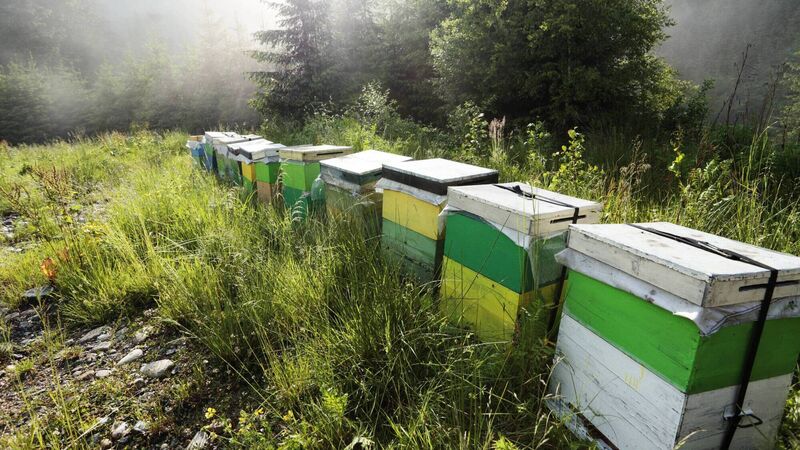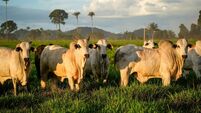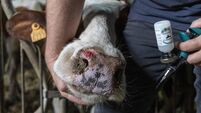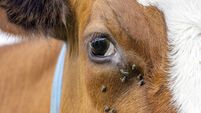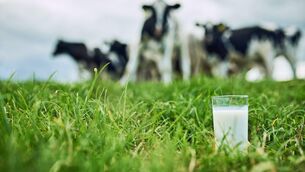With biodiversity under pressure, it was a pity that Agriculture Minister Charlie McConalogue wasn’t more encouraging of a recent suggestion that beehives be substituted for livestock units in farmer payment schemes.
He acknowledged the important contribution bees make to agriculture and biodiversity, as pollinators and honey producers.
He took the opportunity to list the supports his Department provides to encourage and assist beekeepers, and the national beekeeping associations.
These supports include funding to carry out research, grants to national beekeeping associations, and grants for capital investments for beekeepers.
His Department is also a partner in the All Ireland Pollinator Plan, and a member of the All-Ireland Honeybee Strategy Steering Group.
But he wasn’t encouraging, when asked in the Dáil to advocate for beehives to be made a livestock unit under the new CAP proposals, by Kildare South Sinn Féin TD Patricia Ryan.
Imaginative proposals like this are likely to be needed to turn agriculture in a more sustainable direction, and should be encouraged.
Instead it was put down in a style reminiscent of the 1980s Yes Minister satirical TV sitcom, which portrayed a House of Commons in which the real power was held by civil servants rather than ministers.
Some believe Yes Minister is still an essential guide to what goes on in government, the fight between Machiavellian civil servants and willing but thwarted politicians.
Margaret Thatcher was a fan, and more than one prime minister since then has acknowledged the authenticity of Yes Minister.
It portrayed ministers’ struggles to formulate policy and changes when opposed by the Civil Service, and Minister McConalogue’s Dáil reply was reminiscent, first pointing out (correctly) that support schemes for Irish farmers have been for a long time decoupled from livestock units.
This means you can continue to receive payments even without livestock, provided you keep the farm in good condition (and a host of other terms and conditions).
The EU regulations which govern the schemes allow for coupled schemes, but Ireland has opted to only take up this option to implement a coupled scheme in the case of the Protein Aid Scheme, which provides a payment for farmers coupled to their crops of peas, beans and lupins.
It’s even harder for Minister McConalogue to make big changes, when he not only has to follow the advice of his own civil servants, but anything he runs with also has to pass inspection by the Eurocrats, before and EU money could be spent on it, and Irish spending has to pass state aid rules inspection by the EU.
As things stand, the €250 million Areas of Natural Constraint Scheme (which used to be called the disadvantaged area scheme) is the only payment scheme in which there is a requirement for farmers to meet a minimum stocking density requirement of 0.15 livestock units per hectare, albeit set at a low level, and with derogations available for certain circumstances linked to the nature of the land and environmental issues.
The purpose of this minimum stocking density is to maintain an extensive level of grazing on the marginal lands in question, thus helping to mitigate the risk of land abandonment and under grazing.
But substituting beehives for livestock units in the Natural Constraint Scheme would run counter to the design of the scheme, said Minister McConalogue.
Presumably that means bees would not contribute to grazing on the marginal lands.
Maybe looming even larger in the minds of the Minister and his civil servants was a past embarrassment over donkeys, eligible animals to meet the minimum stocking requirement in the Natural Constraint Scheme, along with cattle, sheep, goats, horses, and deer.
As a result, donkeys became somewhat of a bubble commodity during the Celtic Tiger years, in demand both as pets and as disadvantaged premium earners.
In recent years, over 2,000 donkeys were registered to claim disadvantaged payments.
It didn’t look good in Agriculture House, or maybe in Brussels, so a change has been made — and it wasn’t hindered by the civil servants, whereby only 50% of stocking density requirements for the scheme can now be fulfilled using donkeys, in order to earn the ANC payments of €88 to €148 per hectare.
Applicants must have other livestock along with donkeys to fulfil the other 50% requirement.
Whatever about a glut of donkeys, surely we can’t have enough beehives?
One third of our bee species are threatened with extinction, because of drastic reductions in the amount of food (flowers) and safe nesting sites.
The All-Ireland Pollinator Plan is in place to try to create an Ireland where pollinators can survive and thrive, including the bumblebee, which has suffered a 4.8% population decline each year since 2012.
The All-Ireland Pollinator Plan is essentially about providing food, shelter, and safety for bees.
In the marginal lands which qualify for Natural Constraint Scheme payments, they would be more likely to have food and safety, and shelter could be organised.
If beehives would help farmers to qualify for headage payments, they would be only too glad to set up sheltered bee farms on marginal lands.
Such areas are more likely to be pesticide-free, and to have the native wildflowers bees feed from, with bee-friendly low or zero use of artificial fertiliser.
Maybe headage payments for the mountain bumblebee could increase its population in its favoured bogs and heaths at higher altitudes.
It has been expanding southwards, and would find plenty of good habitat in mountainous area of the south west.
A small group of farmers in Co Kildare set up the Protecting Farmland Pollinators scheme and were granted European Innovation Partnership funding through the Department of Agriculture, Food and the Marine.
There was no difficulty in getting 40 farmers willing to engage and give it a shot.
The aim of the project is to show that any farm, regardless of type or intensity level, can become more pollinator-friendly. Early results are encouraging, after farmers agreed to create tiny areas of bare soil for mining solitary bees.

Subscribe to access all of the Irish Examiner.
Try unlimited access from only €1.50 a week
Already a subscriber? Sign in
